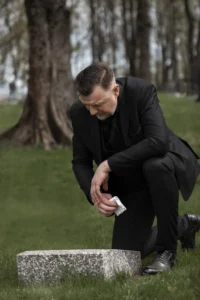How Hollywood’s Best Actors Got Where They Are. Becoming one of Hollywood’s best isn’t a matter of good looks or luck. The top-tier actors—those whose names are etched into the history of cinema—have traveled remarkably unique, challenging, and at times improbable paths to fame. Behind each legendary performance is a story of resilience, vision, technique, and often, reinvention. This journey offers more than celebrity gossip; it’s a study in cinematic legacy.
🔥 1. From Humble Beginnings to Global Icons
Not All Stars Are Born in the Spotlight
Some of the most revered actors of all time came from backgrounds far removed from the red carpet. Their early lives are often as compelling as the characters they play.
Meryl Streep – A Drama Student with a Sharp Eye for Roles
Before becoming the most-nominated actor in Academy Awards history, Meryl Streep studied drama at Yale. Her classical training and commitment to authentic performances gave her an edge early on. She didn’t chase fame—she followed the craft, letting her choice of powerful, often unglamorous roles pave the way.
Morgan Freeman – A Late Bloomer with a Timeless Voice
Freeman didn’t get his breakout role until his 50s in Street Smart (1987), which earned him an Oscar nomination. Before that, he worked in educational TV and stage productions. His rise is a reminder that talent doesn’t expire—it waits for opportunity.
Charlize Theron – From Rural South Africa to Oscar Gold
Raised on a farm in Benoni, South Africa, Charlize Theron moved to Hollywood at 19. A chance encounter at a bank (after a dispute over a check) got her noticed by a talent agent. But what truly launched her career wasn’t luck—it was her transformation in Monster (2003), where she disappeared into the role of serial killer Aileen Wuornos and won an Academy Award.
🎬 Training That Defined a Generation of Actors
It’s not just what roles actors choose—it’s how they approach them. The influence of formal technique, especially Method acting, reshaped the entire landscape of American cinema.
Marlon Brando and the Method Explosion
Brando, a student of Stella Adler and Lee Strasberg, brought Method acting into the mainstream with roles in A Streetcar Named Desire (1951) and On the Waterfront (1954). His emotionally charged, physically grounded performances inspired generations to pursue more naturalistic acting styles.
“Method acting changed the way people saw film—not as a performance, but as a window into the soul,” says film critic Pauline Kael.
Robert De Niro – Transformation as a Weapon
De Niro, one of the most extreme practitioners of the craft, famously gained 60 pounds to play Jake LaMotta in Raging Bull (1980). He studied the real boxer’s speech, movement, and even worked out with him. This immersive approach became a benchmark in actor preparation and influenced figures like Christian Bale and Joaquin Phoenix.
Cate Blanchett – The Classical Chameleon
Blanchett’s training at Australia’s National Institute of Dramatic Art (NIDA) provided a solid base for her versatile performances, from Elizabeth (1998) to Tár (2022). Her ability to blend classical control with emotional complexity makes her one of the most respected working actors today.
🎥 3. Iconic Roles That Changed Everything
Some performances don’t just elevate careers—they redefine entire genres or reshape audience expectations. For Hollywood’s best actors, certain roles become a pivot point, launching them into a new tier of cinematic history.
Al Pacino – From Broadway to The Godfather
Before 1972, Al Pacino was mostly known in New York theater circles. Francis Ford Coppola fought to cast him as Michael Corleone, despite the studio’s initial resistance. His brooding, internalized performance in The Godfather stunned audiences and critics alike, transforming him from an unknown into one of the most influential actors of the 20th century.
Julia Roberts – Pretty Woman and the Rise of the Modern Rom-Com Star
Though she had earlier success in Steel Magnolias, it was Pretty Woman (1990) that turned Roberts into a cultural phenomenon. Her blend of warmth, wit, and vulnerability gave the romantic comedy genre a new level of credibility—and created a new mold for leading actresses in the ’90s.
Heath Ledger – A Villain Role That Made History
Ledger’s casting as the Joker in The Dark Knight (2008) was met with initial skepticism. But the result was a chilling, layered portrayal that transcended genre. His performance won him a posthumous Oscar and is now widely regarded as one of the greatest in cinema history.
The Role That Chose Them
Some actors fight for a part; others seem born for it. Think of Anthony Hopkins in The Silence of the Lambs, Daniel Day-Lewis in There Will Be Blood, or Frances McDormand in Nomadland. These weren’t just performances—they were lightning-in-a-bottle moments where character and actor merged completely.
🎞️ 4. The Power of Smart Career Moves
Hollywood isn’t kind to stagnation. The best actors stay relevant by evolving. Whether that means stepping behind the camera, taking on indie projects, or switching genres entirely, these strategic decisions often make the difference between a strong career and a legendary one.
George Clooney – From TV Heartthrob to Auteur
Clooney’s rise began with ER, but he avoided being typecast by jumping into roles like Out of Sight (1998) and Syriana (2005), the latter earning him an Oscar. His pivot into directing—such as with Good Night, and Good Luck—proved his commitment to storytelling beyond leading-man roles.
Nicole Kidman – Risk-Taking in Every Era
Kidman’s transition from blockbuster success in Moulin Rouge! to daring indie films like Dogville and The Hours showed her range and fearlessness. That willingness to embrace discomfort has kept her at the forefront of critical acclaim for decades.
Leonardo DiCaprio – Choosing Directors Over Franchises
From his early fame in Titanic to his continued collaboration with auteurs like Martin Scorsese (The Departed, The Wolf of Wall Street) and Quentin Tarantino (Once Upon a Time in Hollywood), DiCaprio has built a portfolio defined by complexity. He rarely takes the easy road—and it’s paid off with longevity and impact.
🌟 5. Industry Mentorships and Game-Changing Collaborations
No One Makes It Alone in Hollywood
Behind nearly every legendary performance lies a mentor, collaborator, or director who helped shape an actor’s path. Hollywood is filled with dynamic actor-director partnerships that have built careers and elevated cinema itself.
This partnership changed American cinema. Starting with Mean Streets (1973), Martin Scorsese and Robert De Niro created a legacy of complex, gritty, and unforgettable characters. Their collaborations (Taxi Driver, Raging Bull, The Irishman) pushed both artist and audience into new emotional territory.
Greta Gerwig and Saoirse Ronan – A Modern Muse Connection
Their work in Lady Bird (2017) and Little Women (2019) showcased Ronan’s emotional intelligence and Gerwig’s directorial sharpness. The trust between them allowed for authentic storytelling that speaks to a generation. Their relationship reflects a new era of collaboration in Hollywood—one based on shared vision and mutual respect.
Paul Thomas Anderson and Daniel Day-Lewis – Precision Meets Obsession
Day-Lewis, a master of preparation, found a kindred spirit in Paul Thomas Anderson, whose detailed direction in There Will Be Blood (2007) resulted in one of the most intense performances ever filmed. Their synergy turned an already powerful script into a modern epic.
Mentorship That Shaped Icons
Actors like Denzel Washington, who was mentored by stage legend Lloyd Richards, or Jennifer Lawrence, who often credits David O. Russell’s direction for refining her screen presence, prove that having the right guide can amplify raw talent into refined brilliance.
🎯 6. Resilience, Setbacks, and Staying Power
Resilience is the most underrated quality in an actor’s career. For every award-winning role, there are a dozen rejections, box office flops, or misunderstood performances. What separates the good from the legendary is what they do next.
Viola Davis – Fighting for Representation
Despite her undeniable talent, Davis had to battle for roles that reflected her full range. Her breakout in Doubt (2008) led to even more impactful work in The Help and Fences. She became the first Black actor to achieve the Triple Crown of Acting (Oscar, Emmy, Tony)—a landmark not only of skill, but of persistence.
Keanu Reeves – Reinvention After Personal Tragedy
Reeves’ career has gone through multiple phases, from Speed to The Matrix to John Wick. But it’s his personal resilience that resonates most with fans. After major personal losses and a career lull, he found new cultural relevance by embracing stylized action, humility, and generosity off-screen.
Emma Stone – Consistency in Chaos
Stone’s early comedic roles in Superbad and Easy A showcased charisma, but she proved her dramatic depth in La La Land, earning an Oscar. What keeps her at the top is consistency—she selects varied roles, avoids overexposure, and adapts to changing trends without compromising her identity.
Interactive Insight:
Which actor’s comeback story inspires you the most? Share a performance that changed your perception of an actor’s talent.



